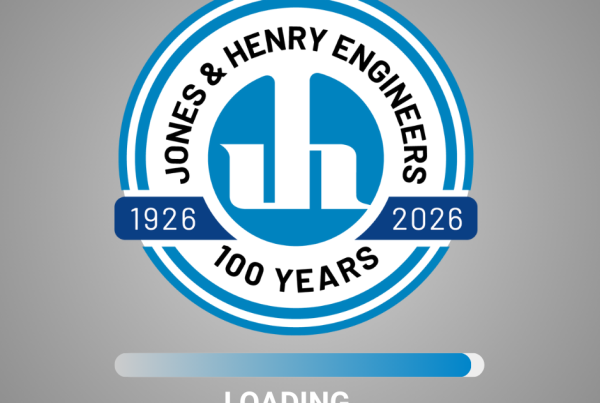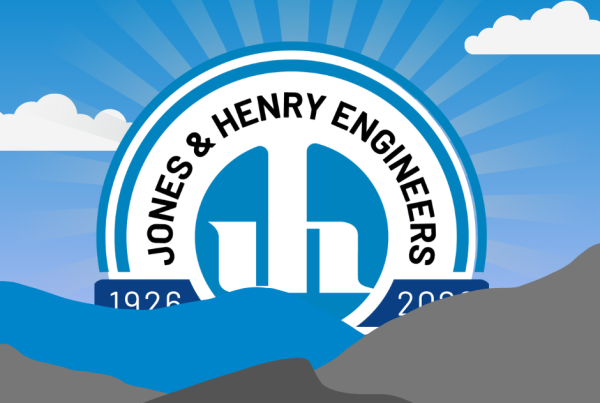
Jones & Henry Engineers has witnessed, and played a crucial role in, evolving water engineering practices over the past century.
Since its founding in 1926, Jones & Henry Engineers has been part of a remarkable journey in the US water engineering field. The transformation in water management and treatment practices over the decades reflects a growing awareness of public health, environmental issues, and the need for sustainable water resource management.
As Jones & Henry approaches its 100th anniversary, it becomes clear that advancements in water treatment and safety have been pivotal in shaping the engineering landscape. We’ve had a front-row seat to these historical developments, which highlight technological innovations and underscore the increasing importance of prioritizing a proactive approach to addressing challenges.
Here is a look back at this past century’s key developments in water engineering.
Advancements in Water Treatment and Safety
One of the most significant leaps in water engineering has been the advancement of water treatment technologies. The introduction of chlorination in the early 20th century marked the beginning of widespread practices that dramatically reduced waterborne diseases. As knowledge expanded, filtration and disinfection processes evolved. By mid-century, technologies such as reverse osmosis and ion exchange gained popularity, leading to more efficient removal of contaminants in our water supply. Additionally, the Clean Water Act of 1972 shifted the focus toward advanced wastewater treatment, recognizing the importance of protecting aquatic ecosystems.
Infrastructure Development and Management
The 1900s saw a boom in infrastructure development, as construction of dams and reservoirs became crucial for flood control, water supply, and hydropower. As cities expanded, the demand for extensive water conveyance systems—such as pipes and aqueducts—increased to provide access to safe water. Today, the aging infrastructure of the last century has become a significant challenge, requiring substantial investments for repairs and upgrades to maintain the reliability of our water systems.
Environmental Protection and Water Quality Regulation
The landmark Clean Water Act of 1972 reshaped the landscape of water engineering, setting standards for pollutant discharges and implementing permit programs that were vital for water quality. As the understanding of nonpoint source pollution and ecosystem health deepened, watershed management gained prominence. Notably, today’s engineers must also incorporate climate change considerations, anticipating impacts such as increased flooding and drought when designing water systems.
Addressing Water Scarcity and Promoting Water Reuse
With rising concerns over water scarcity, innovative approaches such as water reuse and recycling have come to the fore. Technologies for graywater recycling and even direct potable reuse are gaining traction, driven by the pressing need to make every drop count. Additionally, desalination plants are appearing in coastal regions where traditional water sources are dwindling.

Emerging Technologies and Innovative Approaches
As technology advances, so too do the methods engineers employ in managing water resources. Innovative water technologies, including sensors and data analytics, provide new avenues for efficient water management by automating processes such as wastewater treatment and leak detection. Furthermore, nature-based solutions, including constructed wetlands, are emerging as sustainable alternatives for water treatment that harmonize with the environment.
Conclusion
The evolution of water engineering in the United States since 1926 illustrates a shift from a narrow focus on water supply and flood control to a holistic understanding encompassing water quality protection, ecosystem vitality, and climate resilience. As we face the challenges of population growth, climate change, and environmental protection, the lessons learned and advancements made over the past century will be critical to shaping a sustainable future for water management.
At Jones & Henry, we believe the journey is just beginning. The innovations and practices we embrace today will lay the foundation for future generations to thrive.

We view wastewater as a resource.
We have extensive experience in wastewater treatment, disposal, and utilization.




